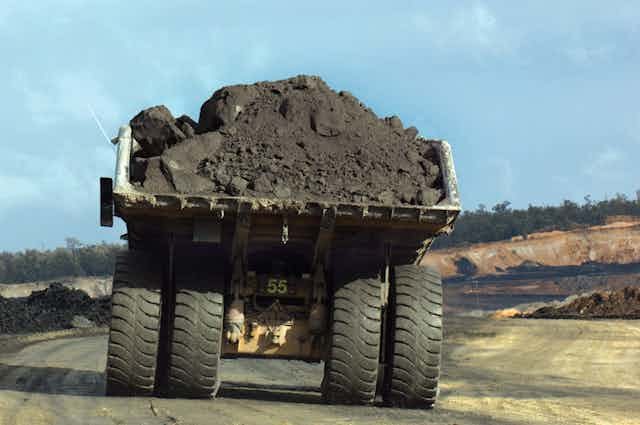The Australian government’s strident criticism of Westpac for not financing the Adani Carmichael coal mine is out of step with the economics. As the cost of renewable energy falls and its adoption increases, fossil fuels are becoming a riskier investment.
It’s not just Westpac. This shift is reflected right across the finance industry. The big four Australian banks have all declined to finance this mine, as have many large international financial institutions.
The Commonwealth Bank quit as the project’s financial adviser in August 2015. NAB ruled out financing the mine in September 2015. ANZ effectively ruled out financing in October 2015 and again, more firmly, in December 2016.
Big overseas financiers Standard Chartered, Barclays, Royal Bank of Scotland, Citi, HSBC, Morgan Stanley, Société Générale, Crédit Agricole, JP Morgan Chase, Deutche Bank and BNP Baripas have also already abandoned or made clear their lack of support for the mine.
Adani’s coal was to be used to generate electricity in India, recently seen as the future for the product given China’s shift away from coal. But Indian demand for coal is slipping. Its new National Electricity Plan has non-fossil fuels rising from the current 30% to 56% of installed power capacity by 2027.
The Indian government itself now thinks it may not need any new coal power plants for at least a decade.
As mines require a huge initial investment that pays itself off over many years, this increases the risk that the Carmichael mine will become a “stranded asset”.
Shifting economics of coal
Sure, financial institutions are under pressure from customers and activists to avoid investments that damage the climate. But for these institutions, such pressures only make a difference at the margin. For them it is the poor economics of coal that is fundamental.
The long-term prospects of coal are weakened by the rapid changes in technology and the deterioration of the climate outlook.
Solar energy prices have fallen more rapidly than most expected, and battery technology and use is rapidly improving.
A recent study found that solar energy is on a trajectory to supply at least 3 terawatts (TW) of power globally by 2030, and potentially up to 10TW if certain barriers to installation can be overcome. For comparison, the world’s total electricity capacity from all sources as of 2014 was just 6TW.
Financiers’ minds may be focused still further by the fact that, if anything, scientists appear to have underestimated the effects of climate change on sea levels, polar ice caps, and methane emissions from thawing permafrost and lakes.
From short- to long-term thinking
The fact that the financial industry is reluctant to fund the Carmichael mine is just one example of the phenomenon described in a report by the Asset Owners Disclosure Project (AODP) as “a fundamental power shift … from short-termers to long-termers”.
There are several reasons for this, besides the changing economics of renewable technology, the worsening climate outlook, and the shifting policies in countries like China and India.
New tools are being developed to enable investors to quantify the impact of climate on their investments. In financial circles, the more things can be counted, the more they count.
Superannuation funds and overseas pension funds need to invest over long periods of time, and so are now forced to invest with climate change in mind. They can’t afford to have a stranded asset on their books.
Reinsurers - essentially large firms that provide insurance for insurance companies - face the same issue. They need to minimise exposure to extreme weather events, which are increasingly influenced by climate change.
Fund managers are creating financial products to enable investment in climate change adaptation. And some investors are taking more control over their investments, rather than leaving them in the hands of fund managers, so they can give appropriate priority to climate issues.
This is not to say that financiers around the world are uniformly reacting to climate issues. The AODP report shows that, on average, European and Australian asset owners and fund managers have done well in acting on climate risk, whereas American, Middle Eastern and (until now) Chinese ones have done poorly.
It’s also not true that finance has uniformly abandoned short-termism. “Climate-interested investors” currently account for just a third of the ownership of the world’s very large corporations.
But no one is going to make even short-term profits out of the Adani coal mine, with its huge upfront capital investment, unless they get a substantial subsidy from the taxpayer. And the long-term prospects look grim.
Those who argue that Westpac’s decision was “illogical” are swimming against both the financial and technological tides.

